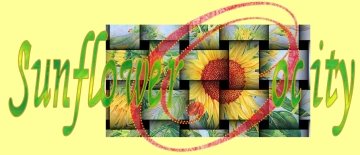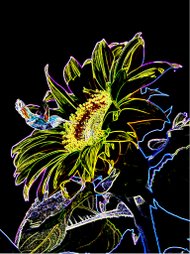Container gardening is great for indoors, greenhouses, patios and other small spaces and even has some advantages over in ground gardening. With a little planning, anyone can have great container gardens that make the most of small (or large) gardening spaces.
Choose Planters
Choosing appropriate planting containers is one of the most important factors in container gardening success. Very small containers just do not work well for most vegetables or trees and are not advised. Nearly all vegetables and herbs will do well in a pot that is five gallons or larger (12’’ diameter and 12’’ depth). Larger containers also allow for some unique combination planting that produces better results, helps with natural pest control and looks great on the patio. The exception to the need for relatively large containers is with plants having shallow roots, like most salad greens. They can do quite well in shallow pots and even grow well in shallow wok shaped pots as do many annual flowers. Adequate drainage holes are a must for all containers. Containers can be ceramic, wood, plastic or even coco bark baskets. Most pots can be painted to change the look, but make sure to use a quality outdoor lacquer paint or stain. If using terracotta pots or wood it is advisable to seal the inside with Dry Lock, which can be found at most hardware stores. Otherwise these pots will deteriorate within a couple of seasons. Saucers are also important so pots can drain without making a mess.
Soil for Success
Once good containers are in hand, the growing media that they are filled with is the most important factor to container gardening success. Most plants prefer well drained soil, and this is particularly important with container gardening. Quality potting soil, is in fact not really soil at all. It is composed of various combinations of organic and inorganic components like vermiculite/paralite, peat moss, sand, bark and so forth. Many of these components are there, not for their nutrient adding qualities, but for their water and air retention capabilities. It is very important not to use top soil or other clay based soils for potting because they will compact and result in big problems. The best potting medium to buy is premium potting soil and it should be lightweight, loose, and hold moisture well. Generally, with potting soil, you get what you pay for.
When filling pots with soil, first place a piece of window screen in the bottom of each pot and then an inch or so of gravel, next find a good time release fertilizer and mix it with the soil according to the package directions. If it is desirable to keep the containers organic, crab meal can be used as time release fertilizer to mix with the soil. Good sources for this are Dirt Works.net and 4Hydroponics.com. Regular feedings will still be needed, but time realease fertilizer provides added insurance. Water storing crystals work well in containers and may also be added to the soil. Several popular brands are, Soil Moist.com and Agrosoke.net.
Plant a Container Garden
Timing is very important to success in gardening. Plant hardiness zones can be found online at many locations including http://www.demesne.info/Garden-Help/US-Plant-Hardiness/. Knowing the zone number for a particular region helps, but because of micro-climates within each zone, it is advisable to locate more specific information from a local gardening center, or perhaps a gardening section of the local newspaper. Planting calendars are also often available online by searching on the county name. One advantage of container gardening is that you can start seeds indoors, or in a greenhouse, about eight weeks before it is expected to be warm enough for them grow outside, and then just move the containers outside when the time is right. It is also nice to plant an extra pot or two to share with friends and family.
There are many varieties of vegetables that have been developed especially for container gardening. Park Seeds has a great selection of plants and seeds specifically developed for containers including a great tomato variety called the Tomato Container Choice Hybrid. Another online resource specializing entirely in seeds for container gardening can be found at ContainerSeeds.com. Look for descriptive words like bush, compact or dwarf when buying vegetable seeds or transplants. It is also advisable to do a little reading on companion planting as this gardening technique works exceptionally well in containers. You can find lots of information on companion planting with an online search on “companion planting”. Two great books; Carrots Love Tomatoes: Secrets of Companion Planting for Successful Gardening by Louise Riotte and The Bountiful Container by Rose Marie Nicholas McGee and Maggie Stuckey are excellent references on the topic.
Feeding Container Gardens
Fertilizer replenishes the nutrients that plants use and that are washed away. One advantage of container gardening is that less water is needed so there is less leaching of nutrients from the soil, and hence the need for fertilizer is reduced, but not eliminated. For best results, look for complete fertilizers that are recommended especially for container gardening, and fertilize according to the package directions. A Good source for these is homeharvest.com. Also consider foliar feeding. Used along with soil based fertilizers, foliar feeding gives a one-two punch that results in great gardens. Check out jtmhydronutrients.com.
Tips for Container Gardening Success
Heat buildup in the summer can be a problem with container gardening. Larger pots help, as does arranging pots together so that some of the pot surfaces are shaded by other plants and pots. Another good technique is to place a plastic pot with plants, inside a decorative pot that is slightly larger. Then place a bit of straw or mulch in the space between the two pots for insulation.
Another great technique for medium sized pots that will help keep plants moist and cool is to place a disposable baby diaper in the pot and fill it with dirt for planting. The diaper will absorb moisture which will keep the plants roots moist and cool, releasing water as it dries between watering.
Add water saving crystals to your soil mix to keep soil moist and reduce watering needs.
After planting seeds and watering, cover the pot with plastic wrap to make a “mini greenhouse” to retain moisture and warmth.
A great space saving technique with larger pots is to plant larger plants like peppers and tomatoes that need deep root space and then line the top of the pot with salad greens and/or annual flowers that do not require the deep root space. The surface plants not only look great, but they shelter the soil and help to retain moisture.
Add herbs, small fruits like strawberries, flowers and pest retarding flowers like nasturtiums and French marigolds to your vegetable planters.
A layer of sand will help keep gnats and other pests from laying eggs in house plant soil. A layer of peat moss on top of the soil will help retain moisture for outdoor containers.
Putting large planters on casters makes it easy to move plants from sunny to shady areas or vise versa when needed. These can be purchased at gardeners.com.
Consider installing an inexpensive simple drip watering system to help with the watering of container plants.
Subscribe to:
Post Comments (Atom)



No comments:
Post a Comment